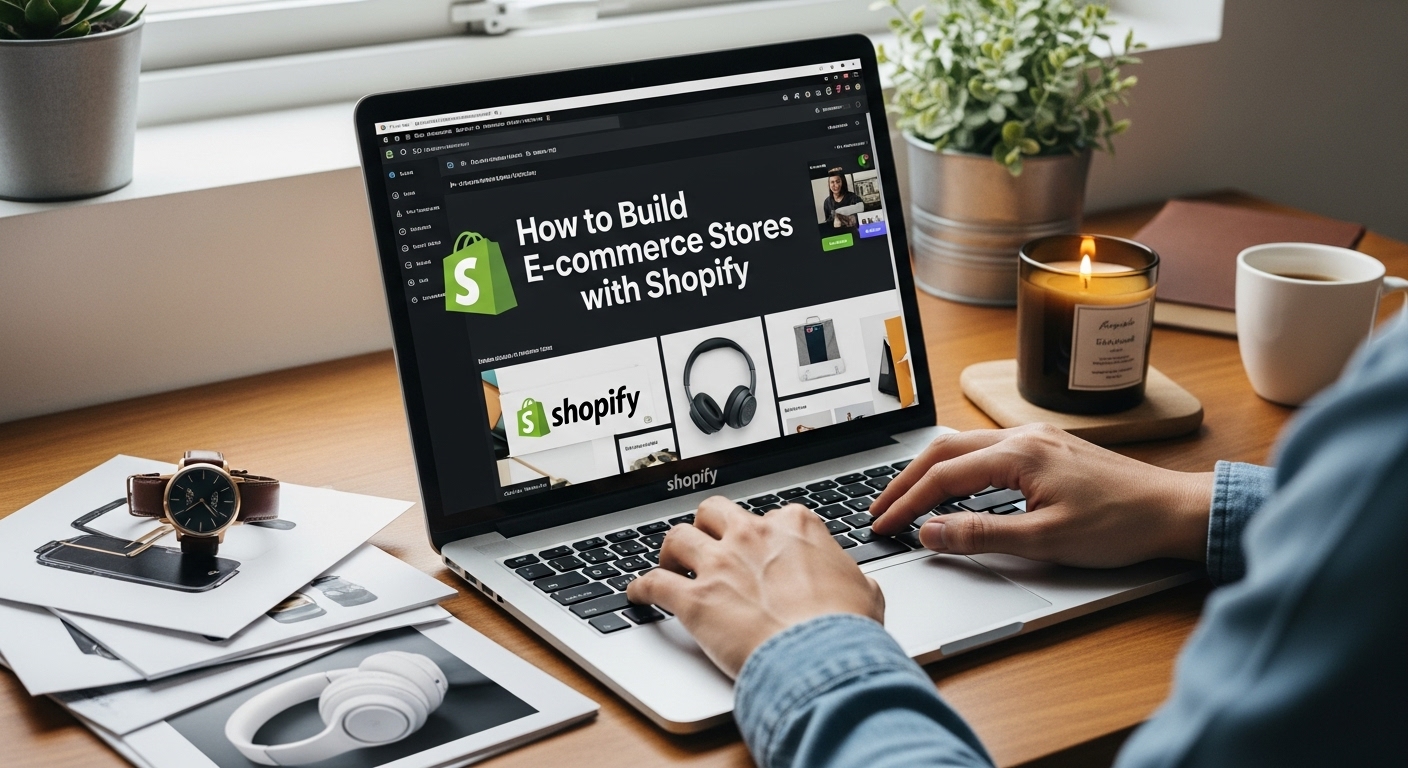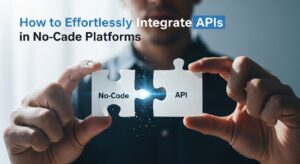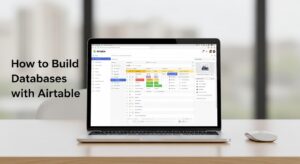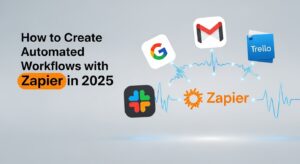Building a successful online business has never been more accessible, and learning how to build e-commerce stores with Shopify is your gateway to digital entrepreneurship. With over 1.7 million businesses worldwide trusting Shopify to power their online stores, this platform has proven itself as the ultimate solution for entrepreneurs ready to transform their ideas into profitable ventures.
Whether you’re a complete beginner or looking to migrate from another platform, this comprehensive guide will walk you through every essential step needed to build e-commerce stores with Shopify successfully.
Why Choose Shopify for Your E-commerce Journey?
Before diving into how to build e-commerce stores with Shopify, it’s crucial to understand why millions of entrepreneurs choose this platform over competitors like WooCommerce, BigCommerce, or Magento.
Key Advantages:
- User-friendly interface requiring no coding knowledge
- Mobile-responsive themes that look professional on all devices
- Built-in payment processing with Shopify Payments
- Extensive app ecosystem with over 8,000 applications
- 24/7 customer support available via chat, email, and phone
- Scalability from startup to enterprise level
According to Shopify’s official statistics, stores on their platform generate over $444 billion in global economic activity annually, proving the platform’s effectiveness for businesses of all sizes.
Step 1: Planning Your Shopify E-commerce Store Strategy
The foundation of learning how to build e-commerce stores with Shopify starts with thorough planning. Successful stores don’t happen by accident—they’re built on solid strategic foundations.
Market Research and Niche Selection
Start by identifying your target market and analyzing competitors. Use tools like:
- Google Trends for market demand analysis
- SEMrush for competitor keyword research
- Facebook Audience Insights for demographic data
- Amazon Best Sellers for product validation
Business Model Decision
Business Model | Pros | Cons | Best For |
Dropshipping | Low startup costs, no inventory | Lower profit margins | Beginners |
Private Label | Higher margins, brand control | Higher initial investment | Established businesses |
Wholesale | Bulk pricing advantages | Large inventory requirements | Experienced retailers |
Print on Demand | No inventory, customization | Limited product types | Creative entrepreneurs |
Step 2: Setting Up Your Shopify Account
When you build e-commerce stores with Shopify, the account setup process is straightforward but requires attention to detail.
Choosing Your Shopify Plan
Shopify offers several pricing tiers:
- Basic Shopify ($29/month): Perfect for new businesses
- Shopify ($79/month): Ideal for growing businesses
- Advanced Shopify ($299/month): Best for scaling enterprises
- Shopify Plus: Custom pricing for high-volume businesses
Initial Configuration Steps
- Create your account at Shopify.com
- Choose your store name (this becomes your myshopify.com URL)
- Complete the business information section
- Set up your payment information
- Configure basic store settings
Pro Tip: Take advantage of Shopify’s 14-day free trial to explore features before committing to a plan.
Step 3: Selecting and Customizing Your Shopify Theme
Visual design plays a crucial role when you build e-commerce stores with Shopify. Your theme creates the first impression and significantly impacts conversion rates.
Free vs. Paid Themes
Free Themes Benefits:
- Cost-effective for beginners
- Regular updates from Shopify
- Mobile-responsive design
- Basic customization options
Paid Themes Benefits:
- Advanced customization features
- Unique design elements
- Better conversion optimization
- Premium support from developers
Top-Performing Shopify Themes
- Dawn (Free) – Minimalist and fast-loading
- Debut (Free) – Perfect for fashion stores
- Brooklyn (Paid) – Excellent for photography
- Impulse (Paid) – High-converting design
- Turbo (Paid) – Speed-optimized theme
Theme Customization Best Practices
When you build e-commerce stores with Shopify, focus on these customization elements:
- Brand colors that reflect your business identity
- Typography that enhances readability
- Logo placement for maximum brand recognition
- Navigation structure for intuitive user experience
- Call-to-action buttons that drive conversions
Step 4: Adding Products to Your Shopify Store
Product setup is where your store comes to life. Learning how to build e-commerce stores with Shopify means mastering product management.
Essential Product Information
Each product listing should include:
- Compelling product titles with relevant keywords
- High-quality product images (minimum 1024×1024 pixels)
- Detailed descriptions highlighting benefits and features
- Accurate pricing including any variants
- SEO-optimized URLs and meta descriptions
- Inventory tracking settings
- Shipping information and weight
Product Photography Tips
Professional product images increase conversions by up to 30%. Follow these guidelines:
- Use natural lighting whenever possible
- Maintain consistent backgrounds across all photos
- Show multiple angles of each product
- Include lifestyle shots showing products in use
- Optimize image sizes for faster loading times
Product Organization Strategies
Create logical product categories and collections:
- By product type (shirts, pants, accessories)
- By brand (Nike, Adidas, Puma)
- By price range (under $50, $50-100, over $100)
- By season (summer, winter, holiday)
- By customer segment (men, women, children)
Step 5: Configuring Payment and Shipping Settings
Smooth checkout processes are essential when you build e-commerce stores with Shopify. Complex payment or shipping procedures lead to cart abandonment.
Payment Gateway Options
Shopify Payments Benefits:
- No transaction fees (only processing fees)
- Integrated fraud protection
- Support for major credit cards
- Multi-currency capabilities
Alternative Payment Gateways:
- PayPal – Trusted by customers worldwide
- Stripe – Developer-friendly with advanced features
- Square – Perfect for omnichannel businesses
- Amazon Pay – Leverages Amazon customer accounts
Shipping Strategy Development
Shipping Method | Customer Appeal | Profit Impact | Best For |
Free Shipping | High | Requires price adjustment | High-value items |
Flat Rate | Medium | Predictable costs | Similar-sized products |
Calculated | Low | Most accurate | Varied product sizes |
Local Pickup | Medium | No shipping costs | Local businesses |
International Shipping Considerations
When you build e-commerce stores with Shopify for global reach:
- Research customs and duties requirements
- Set up multi-currency pricing
- Configure tax calculations for different regions
- Partner with reliable international carriers
- Create clear shipping policies for each region
Step 6: Essential Shopify Apps and Integrations
The Shopify App Store contains thousands of applications to enhance your store’s functionality. When you build e-commerce stores with Shopify, strategic app selection can significantly improve performance.
Must-Have Free Apps
- Shopify Email – Email marketing automation
- Shopify Chat – Live customer support
- Google Channel – Google Shopping integration
- Facebook Channel – Social media selling
- Kit – AI-powered marketing assistant
Premium Apps Worth the Investment
Conversion Optimization:
- OptinMonster – Email list building
- Yotpo – Reviews and ratings management
- Bold Upsell – Increase average order value
Marketing Automation:
- Klaviyo – Advanced email marketing
- Omnisend – Multi-channel marketing
- Privy – Exit-intent popups
Analytics and Reporting:
- Google Analytics – Detailed traffic analysis
- Lucky Orange – Heatmaps and session recordings
- Hotjar – User behavior insights
Visit the Shopify App Store to explore thousands of additional options for your specific needs.
Step 7: SEO Optimization for Your Shopify Store
Search engine optimization is crucial when you build e-commerce stores with Shopify. Proper SEO drives organic traffic and reduces dependence on paid advertising.
On-Page SEO Essentials
Title Tag Optimization:
- Include primary keywords in product titles
- Keep titles under 60 characters
- Make them compelling and clickable
- Use brand name strategically
Meta Description Best Practices:
- Write unique descriptions for each page
- Include target keywords naturally
- Keep descriptions under 160 characters
- Add call-to-action phrases
Technical SEO for Shopify
Site Speed Optimization:
- Choose lightweight themes
- Optimize images before uploading
- Minimize app usage to reduce bloat
- Use Shopify’s CDN for faster loading
Mobile Optimization:
- Select mobile-responsive themes
- Test touch navigation functionality
- Optimize page loading speeds on mobile
- Ensure readable font sizes
Content Marketing Strategy
Regular content creation helps when you build e-commerce stores with Shopify:
- Blog about industry topics relevant to your products
- Create buying guides to help customers
- Share customer stories and testimonials
- Produce video content for product demonstrations
- Develop seasonal content aligned with sales cycles
Step 8: Marketing Your Shopify Store
Building your store is only the beginning. Learning how to build e-commerce stores with Shopify includes mastering various marketing channels.
Social Media Marketing
Platform-Specific Strategies:
Instagram:
- Share high-quality product photos
- Use relevant hashtags for discovery
- Partner with micro-influencers
- Create Instagram Shopping posts
Facebook:
- Set up Facebook Shop integration
- Run targeted advertising campaigns
- Join relevant groups in your niche
- Share customer testimonials
TikTok:
- Create entertaining product videos
- Follow trending hashtags
- Partner with TikTok creators
- Show behind-the-scenes content
Email Marketing Excellence
Email marketing generates $42 for every $1 spent, making it essential when you build e-commerce stores with Shopify.
Email Campaign Types:
- Welcome series for new subscribers
- Abandoned cart recovery sequences
- Product recommendation emails
- Seasonal promotion campaigns
- Customer retention programs
Paid Advertising Strategies
Google Ads:
- Target high-intent keywords
- Create compelling ad copy
- Optimize landing pages for conversions
- Use Google Shopping campaigns
Facebook/Instagram Ads:
- Utilize detailed targeting options
- Test different ad formats
- Retarget website visitors
- Create lookalike audiences
Step 9: Analytics and Performance Monitoring
Data-driven decisions separate successful stores from failures. When you build e-commerce stores with Shopify, establishing proper analytics is non-negotiable.
Key Performance Indicators (KPIs)
Metric | What It Measures | Target Range | How to Improve |
Conversion Rate | Visitors who make purchases | 2-3% average | Optimize checkout, improve trust signals |
Average Order Value | Average purchase amount | Varies by industry | Upselling, bundle offers |
Customer Lifetime Value | Total customer revenue | 3x acquisition cost | Retention programs, quality service |
Cart Abandonment Rate | Incomplete purchases | Under 70% | Simplify checkout, offer incentives |
Essential Analytics Tools
Google Analytics 4:
- Enhanced e-commerce tracking for detailed insights
- Audience segmentation for targeted marketing
- Goal tracking for conversion optimization
- Custom reporting for specific metrics
Shopify Analytics:
- Built-in reporting dashboard
- Sales performance tracking
- Customer behavior analysis
- Product performance metrics
Third-Party Tools:
- Hotjar for user behavior analysis
- Crazy Egg for heatmap insights
- Mixpanel for advanced event tracking
Step 10: Scaling and Optimizing Your Shopify Store
The final step in learning how to build e-commerce stores with Shopify involves continuous optimization and scaling strategies.
Conversion Rate Optimization (CRO)
A/B Testing Elements:
- Product page layouts and descriptions
- Checkout process simplification
- Call-to-action button colors and text
- Email marketing subject lines
- Product pricing strategies
Customer Service Excellence
Outstanding customer service builds loyalty and drives repeat purchases:
- Respond quickly to customer inquiries
- Provide detailed FAQ sections
- Offer multiple contact methods
- Train staff in product knowledge
- Follow up after purchases
International Expansion
When ready to expand globally:
- Research target markets thoroughly
- Localize product descriptions and currency
- Understand legal requirements in each region
- Partner with local shipping providers
- Adapt marketing messages to cultural preferences
Advanced Shopify Features for Growing Businesses
As your business grows, leverage advanced Shopify features:
Shopify Flow
Automation Capabilities:
- Inventory management workflows
- Customer segmentation automation
- Order fulfillment processes
- Marketing campaign triggers
Shopify Scripts
Custom Functionality:
- Dynamic pricing rules
- Shipping calculation modifications
- Payment method restrictions
- Promotional logic
Multi-Channel Selling
Expand beyond your Shopify store:
- Amazon marketplace integration
- eBay selling capabilities
- Facebook Shop setup
- Instagram Shopping features
- Google Shopping listings
Common Mistakes to Avoid
Learning how to build e-commerce stores with Shopify includes understanding common pitfalls:
Design Mistakes
- Cluttered homepage design
- Poor mobile optimization
- Inconsistent branding across pages
- Slow loading times
- Complex navigation structure
Marketing Errors
- Neglecting email marketing
- Focusing only on paid advertising
- Ignoring customer reviews
- Poor social media presence
- Inadequate SEO efforts
Operational Issues
- Insufficient inventory management
- Complicated checkout process
- Poor customer service
- Unclear return policies
- Inadequate product descriptions
Security and Legal Considerations
Protecting your business and customers is paramount:
Data Protection
- SSL certificates for secure connections
- PCI DSS compliance for payment processing
- Regular security updates
- Strong password policies
- Two-factor authentication setup
Legal Requirements
- Terms of service and privacy policies
- GDPR compliance for European customers
- Sales tax registration and collection
- Business license requirements
- Trademark and copyright protection
Future-Proofing Your Shopify Store
Stay ahead of e-commerce trends:
Emerging Technologies
- Artificial intelligence for personalization
- Augmented reality for product visualization
- Voice commerce optimization
- Chatbot integration for customer service
- Blockchain for supply chain transparency
Consumer Behavior Trends
- Mobile-first shopping experiences
- Sustainability focus in product offerings
- Personalization expectations
- Social commerce integration
- Omnichannel customer experiences
Conclusion: Your Journey to E-commerce Success
Learning how to build e-commerce stores with Shopify is an investment in your entrepreneurial future. This comprehensive guide provides the roadmap, but success depends on consistent execution, continuous learning, and adaptation to market changes.
Start with a solid foundation by choosing the right plan, selecting an appropriate theme, and setting up essential features. Focus on providing exceptional customer experiences through high-quality products, seamless checkout processes, and outstanding customer service.
Building a successful e-commerce business is a marathon, not a sprint. Stay committed to continuous improvement, monitor your analytics regularly, and always prioritize your customers’ needs.
The opportunity to build e-commerce stores with Shopify has never been more accessible. With over 1.7 million businesses already succeeding on the platform, your store could be the next success story.
Take action today, implement these strategies systematically, and watch your e-commerce dreams transform into profitable reality. Your journey to online business success starts with that first step, creating your Shopify account and beginning to build the store that will change your life.











